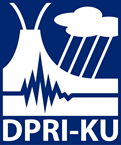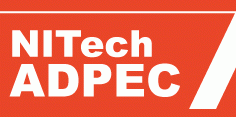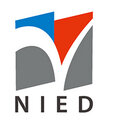Members
 |
Research and Education Center for Natural Hazards
|
| Outline Through the Nansei Islands in the southern Kyushu, torrential rain, typhoons, volcanic eruption, and a variety of other natural disasters caused by such earthquakes (wind and flood damage, sediment-ground disaster, volcano, earthquake disaster, tsunami disaster, etc.) have affected the area. Disaster will change with the times, large scale, and composite. Nuclear disaster should also be considered as a new challenge. And the establishment of a regional disaster prevention system that corresponds to this new situation, the promotion of a comprehensive disaster prevention education and research has become an urgent issue to support it. Kagoshima University Disaster Prevention Education and Research Center, in order to reduce the prevention of disasters in the Nansei Islands region from the southern Kyushu, actual elucidation of the disaster, prediction, disaster prevention education, disaster emergency response, cooperation with local challenges such as disaster recovery reconstruction on effort, do the activities towards the improvement of the local disaster prevention force. [detail] --> |
|
 |
Institute of Nature and Environmental Technology, Kanazawa UniversityKanazawa |
| Outline The solution of various environmental issues caused by both natural phenomena and human activities is one of the most important challenges imposed upon the science and engineering of the 21st century. The Institute of Nature and Environmental Technology at Kanazawa University was established for the purpose to this challenge. The area of the Circum-Sea of Japan has already become one of the core socio-economic areas of the world due to a significant development of industrial and economic activities. However, atmospheric and oceanic environmental changes caused by human activities have been obvious in the area. Harmful influence of such changes extends to human health and terrestrial ecosystem of the area. The Institute of Nature and Environmental Technology at Kanazawa University was established as a university joint research and education facility in 2002 on the basis of streamlining plan of existing university facilities such as "Low Level Radioactive Laboratory" at Faculty of Science, "Marine Laboratory" at Faculty of Science, "Electromagnetic Field Control Laboratory" at Faculty of Engineering, and "Botanical Garden" at Faculty of Science. The institute was integrated with the"Japan Sea Research Institute" at Kanazawa University in 2007 to promote the 21st COE Program"Environmental Monitoring and Prediction of Long- & Short-Term Dynamics of Pan-Japan Sea Area". Further, the institute was again reorganised in 2015 to promote environmental research and education in the pursuit to create sustainable future environments of the world. |
|
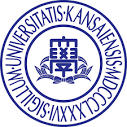 |
Research Center for Social Safety Science, Faculty of Safety Science, Kansai UniversityOsaka |
| Outline Natural and man-made disasters reveal problems that we typically fail to notice in our daily lives. The Faculty of Safety Science aims to minimize natural and man-made disasters through finding and solving existing problems by carefully observing society, people and nature through the lens of safety and security. The faculty intends to foster human resources equipped with problem-solving capabilities by developing studies into specialized fields including law, politics, economics, business administration, psychology, sociology, science, informatics, engineering and social medicine as well as comprehensive study of all fields. The curriculum is centered on the two categories of accidents and natural disasters. Students participate in small-group seminars, and learn current cases of man-made disasters including accidents and natural disasters, while conducting exercises, research and simulations. In the autumn term of their second year, students take either the Man-made Disaster Management Course, or the Natural Disaster Management Course. Depending on their interests and future courses, students are expected to acquire the ability to formulate and implement policies related to safety and security, and thus contributing to society in several fields after graduation. |
|
 |
Research and Development Center of Fire and Environmental Safety (RDFES), The University of KitakyushuKitaKyushu |
| Outline The Research and Development center of Fire and Environmental Safety (RDFES) was established in April 2008 as a research institute within the Faculty of Environmental Engineering, at the University of Kitakyushu. Founded as an initiative of Prof. Kazuya Uezu, its first director, RDFES is the first academic institute in Japan to contribute to environmental engineering and firefighting technology with the aim of promoting social safety. RDFES has become well known among firefighting professionals for its development of an "Environmentally friendly soap-based firefighting agent," as well as new equipment that maximizes the effectiveness of the agent. This is just one example of successful collaboration between RDFES, the Kitakyushu City Fire and Disaster Management Department, a local soap company, and major firefighting enterprises in Japan. Today, RDFES is entering a new research area involving local communities and governments, which aims to mitigate and minimize the risk of fire and natural disasters. Researchers are engaged not only in the development of hardware but also in the creation of an organized social movement that could ensure more effective use of the hardware. Reaching out to local communities reflects the center's position to always welcome new partners to join our important and exciting research activities. |
|
 |
Kobe City College of NursingDisaster Nursing and Global Nursing SectionKobe |
| Outline The Kobe City University of Nursing opened in April 1996, and the Kobe City University of Nursing Graduate School opened in April 2000, both to train nursing professionals with advanced clinical skills and educators, researchers, and administrators, and to further promote nursing research. The School of Nursing encompasses the areas of basic nursing, disaster nursing, and global nursing. The undergraduate curriculum includes courses such as "Disaster Prevention" and "Disaster Nursing I & II." The Graduate School of Nursing offers a "Certified Nursing Specialist Course in Disaster Nursing" within its master's program and a "Global Health and Disaster Nursing" course as part of its doctoral program. Our research interest primarily lies in the domain of Disaster Nursing and Global Nursing, pivotal components within the Fundamental Nursing Science Field. We endeavor to cultivate a multifaceted approach in our research and educational programs, focusing on disasters and global health challenges to induce transformative advancements in nursing practices. We are devoted to developing adept human resources who can proficiently coordinate and collaborate with a spectrum of professionals and organizations. Our aim is to foster the provision of superior care, grounded in clinical judgment and specialized expertise, integrating both care and cure elements seamlessly. We amalgamate findings from our comprehensive research to implement paramount changes in nursing practices, ensuring adaptability and resilience in diverse healthcare environments in the community in changing risk landscape. We utilize our professional capabilities with technology to undertake a pivotal role for care providers, ensuring optimal preparedness and response as first responder to people. The Center for Nursing Care Development in Diversity has been a beacon of communal contribution, particularly in Nishi Ward, Kobe City, exemplified by our ongoing efforts in reconstruction post the Great Hanshin-Awaji Earthquake. [detail] --> |
|
 |
Research Center for Urban Safety and Security (RCUSS), Kobe UniversityKobe |
| Outline The Research Center for Urban Safety and Security (RCUSS) was established on May 11, 1996, about one year following the Great Hanshin-Awaji Earthquake. The mission of RCUSS is to make contributions in building safe and secure urban society by developing the visions towards such society and by conducting researches and educations on suitable methodologies and frameworks in realizing such society. The urban society needs to be above of all a safe and secure place to live, while it serves various and extensive functions for lively industrial, economic and cultural activities, as well as comfortable and pleasant living environments. The urban society is however composed of huge and complex societal and infrastructure systems, accompanied by problems such as urbanization and overcrowding. Thus such society is highly vulnerable to the natural disasters such as earthquakes and floods, as well as to the environmental destruction and pollution due to human and industrial activities. The Great Hanshin-Awaji Earthquake has taught us, through painful sacrifices of people and society, that urban cities are highly vulnerable to disasters and that integrated and holistic researches are required on building a safe and secure urban society. Kobe University that was the only multidisciplinary national university in the quake-stricken area has thus proposed to establish the RCUSS to orchestrate interdisciplinary and integrated researches, both in hardware and software aspects of society, with the aim of creating genuinely safe and secure urban society. The Ministry of Education has granted this request by renewing and expanding the former Reclamation Engineering Research Institute at Kobe University |
|
 |
Implementation Research and Education System Center for Reducing Disaster Risk (IRESC), Kumamoto UniversityKumamoto |
| Outline The IRESC promotes a wide range of educational and research activities for disaster-reductionoriented society that can respond promptly and flexibly to disasters. Our activities extend from the academic circle of universities to the 'field campus' of local communities. They intend to link the universities' research innovation with the implementation of their achievements in society seamlessly as social-knowledge technology. In addition, they aim at nurturing human resources that will contribute to the establishment of robust and resilient social systems against disasters. Organization The IRESC consists of three divisions; 1 ) Research Division for Disaster Reduction in Natural and Social Systems 2 ) Implementation Division of Science and Technology into Society 3 ) Education Division for Disaster Prevention and Reduction |
|
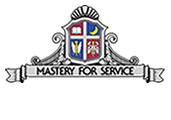 |
Institute of Disaster Area Revitalization, Regrowth and Governance (IDiARRG), Research Institute for Disaster Area Reconstruction, Kwansei Gakuin UniversityHyogo |
| Outline The first research facility in Japan devoted to research on reconstructing disaster-struck areas. It was created on January 17, 2005, the tenth anniversary of the earthquake that devastated Kobe in 1995. In 2008, the institute, a research center open to the public, joined with nationwide researchers, media representatives, volunteers and lawmakers in creating the Japan Society for Disaster Recovery and Revitalization. In 2009, the institute released a draft for a Basic Law on Disaster Reconstruction, and is now working on promoting it. |
|
|
|
Disaster Prevention Research Institute (DPRI)
|
| Outline In 1951, the Disaster Prevention Research Institute (DPRI) was established for research on mechanisms of natural hazards and mitigation of disasters. Since then, DPRI has been a leader in many aspects of natural disaster science, promoting interdisciplinary studies in collaboration with other universities and institutions in Japan. The current mission of DPRI is to study the mechanisms of natural hazards, establish integrated methodologies for disaster reduction based on natural and social sciences, and educate graduate students in science, engineering, and informatics. DPRI has five research divisions, six research centers, and a division of technical affairs. In addition, 15 laboratories and observatories located in western Japan conduct experimental studies and field observations on natural hazards. To promote integrated research projects, each division and center belongs to one of four research groups: 'Integrated Arts and Sciences for Disaster Reduction', 'Seismic and Volcanic Hazards', 'Geohazards', and 'Atmosphere-Hydrosphere Hazards'. DPRI provides the public with scientific results and knowledge on natural hazards and advises national and local governments on disaster prevention strategies. [detail] --> |
|
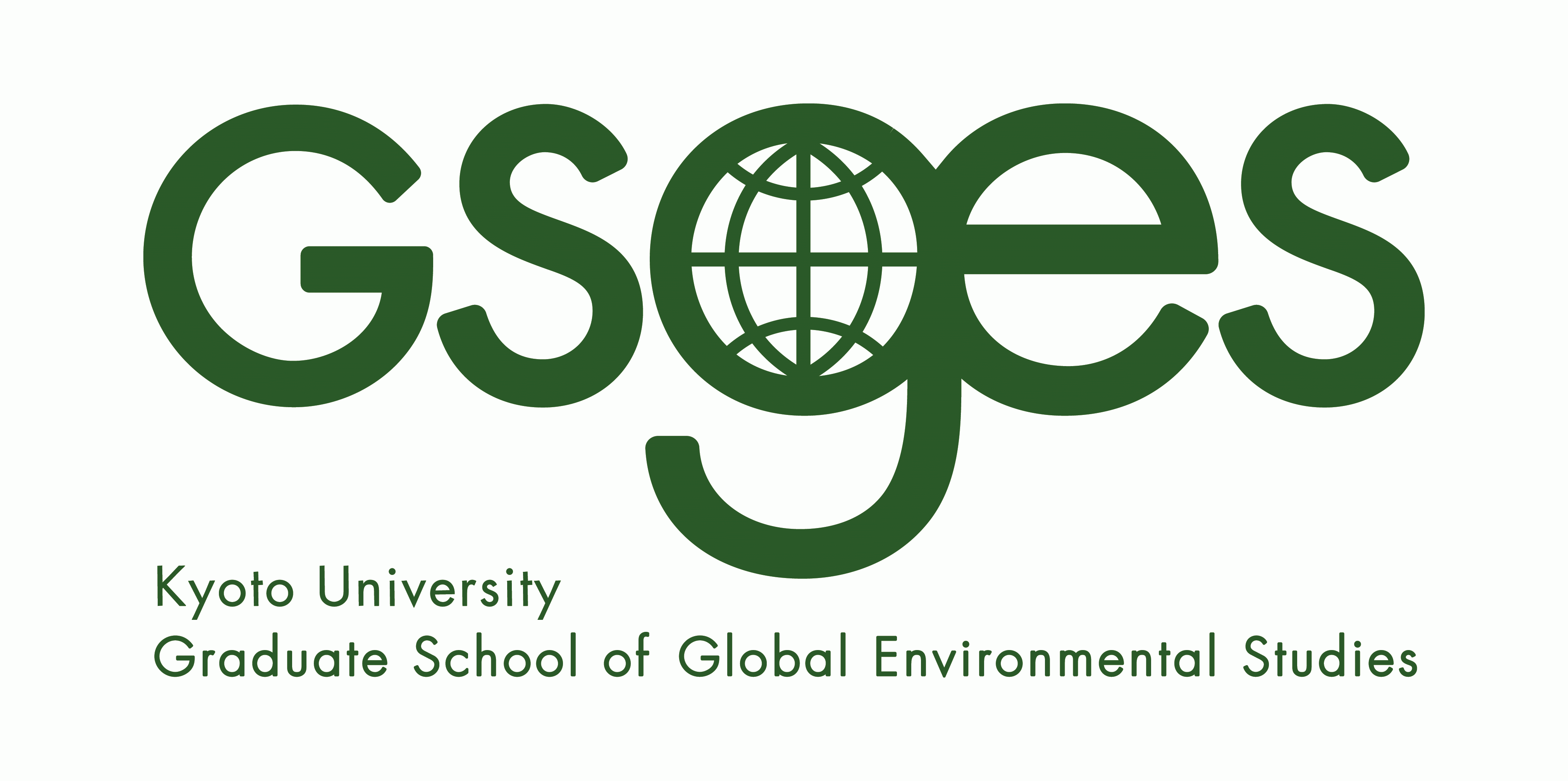 |
Graduate School of Global Environmental Studies (GSGES)
|
| Outline Kyoto University GSGES was established in April 2002 to address the urgent environmental problems of the 21st century. Our primary objective is to help establish global environmental sustainability as a new field of academic study, bringing together ethics, science and technology, and humanities and social sciences. Through our educational and research programs, we seek to foster a new generation of professional practitioners. Research Achievements and Challenges: Regarding to the disaster, GSGES has some researchers in various fields. For example, Prof. Katsumi and Dr. Asari have targeted disaster waste management and reconstruction especially after Great East Japan Earthquake 2011. They have contributed to develop the disaster waste management plan, system and technologies. Prof. Kiyono and Dr. Okumura major in earthquake disaster risk management and have contributed to analyze and reduce the risk. Beside them, education for disaster risk reduction, migration caused by disaster and others are targeted by other researchers. [detail] --> |
|
 |
Disaster Risk Reduction Research Center
|
| Outline The Faculty of Engineering in Kyushu University is the fourth oldest faculty among Japanese universities, and was founded as the College of Engineering of Kyushu Imperial University in 1911. In 1919, the College of Engineering was reorganized as the Faculty of Engineering. In 1947, the Faculty of Engineering of Kyushu Imperial University was renamed as the Faculty of Engineering of Kyushu University. The Faculty of Engineering in Kyushu University has focused on basic education, which provides the foundation for each specialized field, to train students to become people who will play an important role in manufacturing which has led to Japan's development. Our graduates have played a leading role in technological developments in many companies, and our education is highly recognized in industry. Therefore, Kyushu University will continue to focus on basic education in the future. The Disaster Risk Reduction Research Center, Urban System Planning deals with a wide range of urban problems such as a declining population in local cities and a deterioration of the global environment.
|
|
 |
Research Institute for Applied Mechanics (RIAM), Kyushu UniversityFukuoka |
| Outline The Research Institute for Applied Mechanics (RIAM) was established in 1951, consisting of two research divisions, to pursue research in fluid mechanics and solid mechanics. Three divisions and two research facilities later became affiliated with the institute. In 1997, RIAM was reorganized The present research areas of RIAM encompass a wide range of experimental and theoretical fields from micro mechanical phenomena on an atomic scale, to macro mechanical phenomena on a global scale. In addition to individual research at the divisions and centers of the institute, two large research projects have been organized in interdisciplinary research areas: the ocean atmosphere science and engineering research project and the fundamental fusion research project utilizing a spherical tokamak "QUEST" which is now under construction. The aim of the QUEST Project is to investigate both long duration current drive of a spherical tokamak plasma and plasmawall interaction with advanced wall control. RIAM academic staff also play an important role in education through participating in departments of the Interdisciplinary Graduate School of Engineering Sciences (Molecular and Material Sciences, Advanced Energy Engineering Science, and Earth System Science and Technology) and the Graduate School of Engineering (Aeronautics and Astronautics). |
|
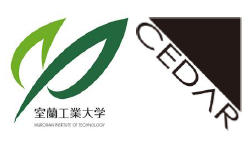 |
Center of Environmental Science and Disaster Mitigation for Advanced Research (CEDAR)
|
| Outline The center was established to help improve the global environment and conserve regional environments and to develop technologies and systems in preparation for natural disasters. As part of the institute's social contribution, the center, which is staffed by faculty members from a variety of fields transcending departmental boundaries, carries out research related to the environment, disaster prevention and new energy in collaboration with other centers on campus. We are striving to contribute to global environmental improvements and the preservation of local environments, and to develop disaster management technologies and systems that will help prepare us for natural disasters. |
|
|
|
Advanced Disaster Prevention Engineering Center (ADPEC)
|
| Outline The Advanced Disaster Prevention Engineering Center (ADPEC) was established in November, 2011. Prediction, mitigation and control of huge natural disasters such as earthquake, tsunami and typhoon will be the final goal of ADPEC. By clarifying the process and the mechanism of the natural disasters and developing various kinds of technologies utilized for the huge disasters, we aim to establish the world leading research center for disaster prevention and mitigation. We energize in "University Consortium for Disaster Mitigation Research in Tokai Area" established in March, 2013. And six national universities participating in consortium let each activity of disaster prevention and mitigation cooperate strongly. The activities of ADPEC are as follows. l To oppose a menace of the large-scale natural disaster such as earthquake, tsunami and typhoon, we perform the practical study for the making of city resisting the disaster that can keep people, assets, economic activities by utilizing ability for technology development of ADPEC overall. l We cope by a social request about disaster prevention and mitigation quickly and support activity to control a disaster from the both sides of hardware and software. We build Tokai area base of a study, the service of city disaster prevention and mitigation. Furthermore, I build the international collaboration network about the East Asia disaster prevention. [detail] --> |
|
|
|
National Research Institute for Earth Science and Disaster Resilience (NIED)Ibaraki |
| Outline It is a common hope of all human beings to create a safe and peaceful society. Our mission is to protect people's lives from threatening disasters and to develop science and technology in order to realize the society resilient to natural disasters. NIED (National Research Institute for Earth Science and Disaster Resilience) aims to protect people's lives and properties from natural disasters and to prepare society to be resilient to natural disasters, through research on disasters caused by earthquakes, volcanoes, floods, landslides, meteorological changes, snow and ice damages. [detail] --> |
|
 |
Research Institute for Natural Hazards & Disaster Recovery, Niigata UniversityNiigata |
| Outline Established in 2011, by re-organizing twice from the former Research Center on Hazards in Snowy Area originally established in 1978. It has 33 years of history. It has 3 Divisions (Environmental Change Science, Complex Disaster Science, Local Security Science), and 8 Sections. About 60 academic staffs and 3 administrative staffs are involved. • Oriented to the most major research institute covering the Japan Sea coast area. [detail] --> |
|
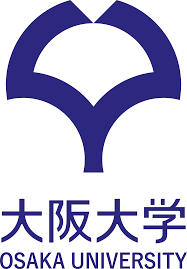 |
Research Initiative for Natural Disaster Prevention of Oil and Gas Spill in Industrial Parks
|
| Outline Oil storage tanks in industrial parks were heavily damaged by large scale tsunami, and large-scale oil spills occurred, which led to fire in entire city area, after Great East Japan earthquake on March 11, 2011. Much more larger scale disasters of damages and hazardous materials releases will be estimated in Tokyo Bay, Ise Bay or Osaka Bay if Tokai-Tonankai-Nankai earthquake simultaneously occurs. It is very urgent to perform risk assessment of damages and hazardous materials releases caused by large scale earthquake and tsunami, and take countermeasures to decrease such disasters. This research initiative purposes to perform risk assessment of damages and hazardous materials releases caused by large scale earthquake and tsunami, propose countermeasures to decrease such disasters, and finally make concrete guidelines for them. [detail] --> |
|
 |
Graduate School of Human Sciences
|
| Outline The School of Human Sciences was established in 1972 covering three academic disciplines: psychology, sociology and education. It was the first school or faculty to carry the name 'human sciences' in the country. In 1976 the Graduate School of Human Sciences was created offering Master and Doctoral level programs. Today areas of study include behavioral sciences, psychology, sociology, biological and cultural anthropology, education, philosophy, development studies and area studies. In 2011 the School of Human Sciences launched a new program taught entirely in English. The new program aims to cultivate self-motivated and reflective students with a sophisticated knowledge base and the necessary practical skills to meet the challenges that they will face in our fast-changing, globalized world. The program offers students two majors to choose from Global Citizenship and Contemporary Japan. While offering an English language learning environment in the classroom, students will also be given an opportunity to begin learning or improve their Japanese language skills. |
|
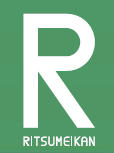 |
Frontier Research Center for Natural Disaster Mitigation
|
| Outline Ritsumeikan boasts four world-class research institutes which work together to promote education and research at Ritsumeikan University and network with researchers and academic societies all over the world. The history of Ritsumeikan dates back to 1869 when Prince Kinmochi Saionji, an eminent international statesman of modern Japan, founded "Ritsumeikan" as a private academy on the site of the Kyoto Imperial Palace. In 1900, Kojuro Nakagawa, former secretary of Prince Saionji, established Kyoto Hosei School, an evening law school that was open to working people. This school formally adopted the name Ritsumeikan in 1913 and was finally given the status of a university in 1922. |
|
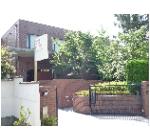 |
Institute of Disaster Mitigation for Urban Cultural Heritage, Ritsumeikan University (R-DMUCH)Kyoto |
| Outline Institute of Disaster Mitigation for Urban Cultural Heritage, Ritsumeikan University based in Kyoto and Shiga, the rich repository of cultural heritage, has been aiming at establishing a base hub for education and research in "Disaster Mitigation of Cultural Heritage and Historic Cities." This considers preservation of arts and culture and disaster mitigation measures to protect the community that supports culture and arts as a whole. In 2003, the University established the Research Center for Disaster Mitigation of Urban Cultural Heritage to lead research activities where arts and sciences work in cooperation, with substantial external funds such as the 21st Century COE Program and the Global COE Program adopted by Ministry of Education, Culture, Sports, Science and Technology (MEXT). The primary objective of the Center is to protect urban cultural assets from disasters, and establish the necessary knowledge and technology to protect cultural heritage for future generations. Since the UNESCO headquarter authorized the Ritsumeikan University as a UNESCO Chair in 2006, we have implemented an international training program on disaster mitigation for cultural heritage for nine consecutive years up to 2014. This has been taking on the role as an international network hub for the study. |
|

